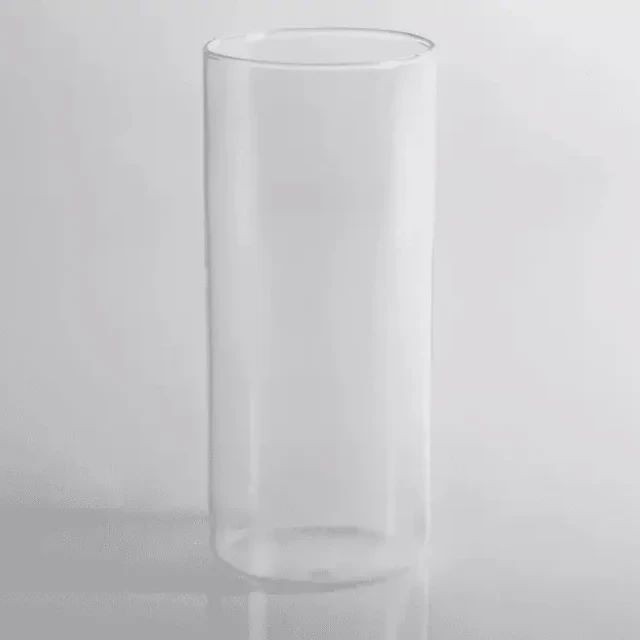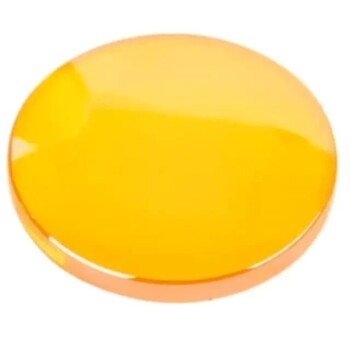
Optical Materials
Alkali-Free Boro-Aluminosilicate Glass
Item Number : KTOM-ABG
Price varies based on specs and customizations
- standard thickness
- 0.3, 0.5, 0.7mm
- Transmittance
- 400 – 2300nm

Shipping:
Contact us to get shipping details Enjoy On-time Dispatch Guarantee.
Alkali-free / Boro-aluminosilicate glass
High borosilicate glass (also known as hard glass) is made by utilizing the conductive properties of glass at high temperature, through heating inside the glass to realize glass melting, and processed by advanced production technology, because the linear thermal expansion coefficient is (3.3 ±0.1)×10-6/K, also known as "borosilicate glass 3.3".Silicon has a lower refractive index than germanium and has a lower density that makes for less weighty optical designs.
Alkali-free/boroaluminosilicate glass, also known as borosilicate glass, is a type of glass that is composed of a combination of boron oxide (B₂O₃), aluminum oxide (Al₂O₃), and silicon dioxide (SiO₂). It is referred to as "alkali-free" because it does not contain alkali metal oxides like sodium oxide (Na₂O) or potassium oxide (K₂O), which are commonly found in other types of glass.
Detail & Parts



Special Properties
- Low alkali content (≤ 0.1%)
- High thermal shock resistance
- Smooth surface with low microroughness
- Superior flatness and high surface quality
- Small thermal coefficient of expansion
Applications of Alkali-free/boroaluminosilicate glass
- Substrate glass for filter or mirror coatings
- Substrates for "Chip on glass" (COG) applications
- Thin-film substrates for electronics
- Glass for active matrix flat panel displays (AMLCD)
- Electroluminescence displays
- Optical windows
- Optics for sensor technology and optoelectronics
Provide customized services
Through the implementation of innovative and state-of-the-art melting processes, we have acquired extensive expertise in the development and manufacture of quality glass products, offering a wide range of optical glass products for a variety of commercial, industrial and scientific applications. The company provides various specifications of optical glass such as raw glass, cut parts and finished components, and cooperates closely with customers to customize products according to customer needs. With an unwavering commitment to quality, we ensure our customers receive the perfect solution tailored to their requirements.
For further quotations, please contact us.
FAQ
What Are The Main Types Of Glass Substrates?
What Are The Main Types Of Glass Materials Available?
What Is The Difference Between Borosilicate Glass And Aluminosilicate Glass?
What Are The Different Types Of Borosilicate Glass?
What Is Soda-lime Glass Used For?
What Are The Applications Of Borosilicate Glass?
What Are The Advantages Of Using Sapphire Substrates?
What Are The Advantages Of Using Optical Glass In Laboratory Settings?
Why Is Boroaluminosilicate Glass Suitable For Laboratory Glassware And Cooking Utensils?
How Is Soda-lime Glass Manufactured, And What Are Its Applications?
What Are The Applications Of Optical Quartz Glass Sheets?
What Makes K9 Quartz Glass Suitable For Optical Applications?
What Makes K9 Glass Special?
What Are The Benefits Of Using PTFE Measuring Cylinders In Laboratories?
What Is A CaF2 Window Used For?
Why Is Glass A Preferred Material For Laboratory Equipment?
What Are The Properties Of Magnesium Fluoride Crystal Substrates?
What Is Silicon Used For In The Near-infrared Range?
What Are Glass Vibration Beads Used For In Laboratories?
4.8
out of
5
The speed of delivery and the quality of the Alkali-free / Boro-aluminosilicate glass were impressive. I'll definitely recommend.
4.9
out of
5
The value for money of the Alkali-free / Boro-aluminosilicate glass is incredible! It's a steal for the quality you get.
4.7
out of
5
The Alkali-free / Boro-aluminosilicate glass is top-notch! It's durable and has lasted me through multiple experiments.
4.8
out of
5
The technological advancement of the Alkali-free / Boro-aluminosilicate glass is remarkable. It's a game-changer in the lab.
4.9
out of
5
I'm amazed by the speed of delivery of the Alkali-free / Boro-aluminosilicate glass. It arrived before I knew it!
4.7
out of
5
The value for money of the Alkali-free / Boro-aluminosilicate glass is outstanding. It's worth every penny.
4.8
out of
5
The durability of the Alkali-free / Boro-aluminosilicate glass is unmatched. It's built to last.
4.9
out of
5
The Alkali-free / Boro-aluminosilicate glass is at the forefront of technology. It's a must-have for any lab.
4.7
out of
5
I'm highly satisfied with the speed of delivery of the Alkali-free / Boro-aluminosilicate glass. It's a testament to their efficiency.
4.8
out of
5
The value for money of the Alkali-free / Boro-aluminosilicate glass is unbeatable. It's an excellent investment.
4.9
out of
5
The Alkali-free / Boro-aluminosilicate glass is exceptionally durable. It's a reliable choice for any laboratory.
4.7
out of
5
The technological advancement of the Alkali-free / Boro-aluminosilicate glass is awe-inspiring. It's a game-changer in the scientific field.
REQUEST A QUOTE
Our professional team will reply to you within one business day. Please feel free to contact us!
Related Products

Glassy Carbon Sheet RVC for Electrochemical Experiments
Discover our Glassy Carbon Sheet - RVC. Perfect for your experiments, this high-quality material will elevate your research to the next level.

Optical Window Glass Substrate Wafer CaF2 Substrate Window Lens
A CaF2 window is an optical window made of crystalline calcium fluoride. These windows are versatile, environmentally stable and resistant to laser damage, and they exhibit a high, stable transmission from 200 nm to about 7 μm.

Zinc Selenide ZnSe Optical Window Glass Substrate Wafer and Lens
Zinc selenide is formed by synthesizing zinc vapor with H2Se gas, resulting in sheet-like deposits on graphite susceptors.
Related Articles

Glassware vs. Plasticware - Which is the Better Choice for Your Needs?
Both glassware and plasticware have their own advantages and disadvantages, and the choice between the two will depend on the specific needs of your laboratory.

Unveiling the Exceptional Properties and Applications of Optical Quartz Plates
Discover the remarkable characteristics and diverse applications of optical quartz plates, including their superior ultraviolet transmission, thermal stability, and use in lenses, lighting devices, and semiconductor manufacturing.

How To Clean Laboratory Glassware - Part 1
Cleaning laboratory glassware isn't as simple as washing the dishes. Here's how to wash your glassware so that you won't ruin your chemical solution or laboratory experiment.

How to Save Money When Buying a Rotary Evaporator (Rotavapor)
A rotary evaporator, also known as a rotavapor, is a laboratory equipment commonly used to remove solvents from a sample. It works by rotating the sample flask to create a thin film of the solvent, which is then evaporated.

Optical Quartz Plate: A Comprehensive Guide to Applications, Specifications, and Usage
Discover the versatility of optical quartz plates, exploring their uses in various industries, key specifications, and factors that differentiate them from glass. Gain insights into their applications in ultraviolet transmission, precision optics, and more.

Comprehensive Guide to Atmosphere Furnaces: Types, Applications, and Benefits
Explore the world of atmosphere furnaces with our detailed guide. Learn about their types, applications in metallurgy and beyond, and the benefits they offer for precise material heat treatment.

Common Instrumentation and Operations in Organic Synthesis
Overview of essential glass apparatus, distillation setups, recrystallization, and extraction methods in organic synthesis.

Technological Innovations in the Fused Silica Industry
Explore advancements in fused silica, its applications, and future prospects.

Understanding Fused Silica: Properties, Applications, and Advantages
An in-depth look at fused silica, its unique properties, and its diverse applications in various industries.

Common Optical Materials and Their Properties
An overview of various optical materials, their properties, and applications across different spectral ranges.

The Rise of Glass Substrates in Advanced Semiconductor Packaging
Explores the shift towards glass substrates in advanced semiconductor packaging, their advantages, and challenges.

Key Properties and Differences Between Fused Silica and Natural Quartz
A detailed comparison of the properties, appearance, physical, chemical, and application differences between fused silica and natural quartz.